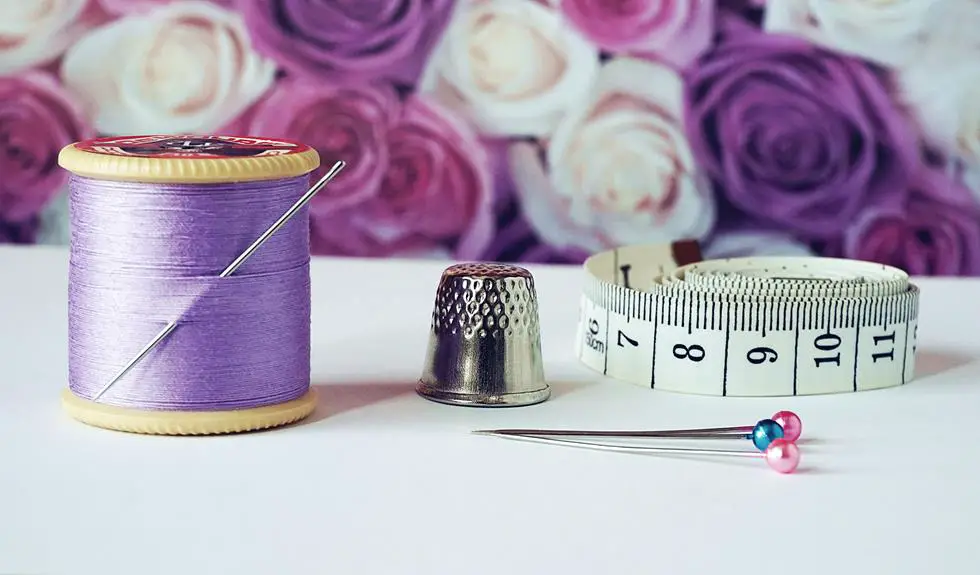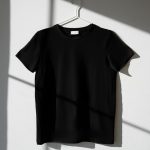When you're ready to tackle sewing with ponte fabric, it's crucial to understand its unique characteristics, like its stretch and structure. You'll want to choose patterns that enhance its qualities, steering clear of overly complicated designs. Armed with the right tools—think ballpoint needles and a stretch stitch option—you can create garments that not only fit well but also stand the test of time. But before you start stitching, there are some essential steps to prepare your fabric that can make all the difference. Let's explore those key preparations further.
Table of Contents
Understanding Ponte Fabric
Ponte fabric, known for its stretch and structure, is a versatile choice that's perfect for creating both casual and formal garments. This double-knit fabric combines polyester, rayon, and spandex, resulting in a fabric that's both durable and comfortable to wear. One of the standout features of ponte is its ability to maintain shape, making it ideal for fitted styles like dresses, trousers, and blazers.
When you work with ponte, you'll appreciate its smooth texture, which allows for easy cutting and sewing. This fabric doesn't fray easily, so you can often skip finishing edges, saving you time during your project. Its weight provides enough coverage, ensuring that your garments look polished and professional.
You'll notice that ponte has just the right amount of stretch, allowing for ease of movement without losing its form. This makes it a great option for activewear or everyday pieces. However, you'll want to use a ballpoint needle and a stretch stitch to accommodate the fabric's elasticity during sewing.
Choosing the Right Patterns
When choosing patterns for ponte fabric, it's crucial to consider how the material's stretch and weight will affect your design.
Stick to styles that complement ponte's structure, like fitted dresses or tailored pants.
Also, keep in mind the complexity of the design; simpler patterns often work best to showcase the fabric's qualities.
Best Patterns for Ponte
Choosing the right patterns for ponte fabric can make a significant difference in your sewing projects. Since ponte is a stretchy, structured knit, you'll want to select patterns that highlight its unique properties. Look for designs that incorporate fitted silhouettes, like bodycon dresses or tailored tops, which take advantage of ponte's stretch while maintaining a polished look.
Pants and leggings are also excellent choices, as ponte fabric offers comfort without sacrificing style. Patterns that feature wide waistbands or clean lines will enhance the fabric's drape and provide a flattering fit. When it comes to skirts, A-line or pencil designs work well, allowing the fabric's stretch to contour your body beautifully.
Don't shy away from layering pieces, either. Cardigans and lightweight jackets made from ponte can elevate your wardrobe, ensuring you stay comfortable yet chic. Just remember to choose patterns that don't require excessive gathering or complicated construction, as ponte fabric can be a bit less forgiving in those areas.
Consider Design Complexity
Selecting patterns with manageable design complexity is crucial for achieving a polished look with ponte fabric. Ponte's stretch and recovery make it a fantastic choice, but intricate designs can overwhelm the fabric's natural drape and structure.
Here are some tips to help you choose the right pattern:
- Opt for Simple Silhouettes: Stick to basic shapes like A-line dresses or straight skirts. These styles allow the fabric's texture to shine without competing with complex cuts.
- Limit Details: Avoid patterns with excessive darts, pleats, or gathers. Instead, look for designs that feature clean lines and minimal embellishments.
- Choose Straight Seams: Patterns with fewer curves and straight seams will be easier to sew, especially if you're new to working with ponte fabric.
- Consider Fabric Weight: Heavier ponte can handle more structure, while lighter weights work best with simpler designs. Match the pattern complexity to the fabric's characteristics for the best results.
Essential Sewing Tools
When you're ready to sew with ponte fabric, having the right tools is key to achieving great results.
You'll need essential sewing tools that make handling this stretchy material a breeze.
Let's explore what you absolutely can't sew without and the best techniques for managing ponte.
Must-Have Sewing Tools
Having the right sewing tools is crucial for achieving professional-looking results with ponte fabric. When you're working with this stretchy material, having the right equipment makes all the difference.
Here are four must-have sewing tools you should consider:
- Ballpoint Needle: This type of needle is designed specifically for knit fabrics like ponte. It glides between fibers rather than piercing them, preventing snags and runs.
- Sewing Machine with Stretch Stitch: A machine that offers a stretch stitch option will help you maintain the fabric's elasticity. This feature ensures your seams don't pop when you move.
- Walking Foot: A walking foot allows the top and bottom layers of fabric to feed evenly through your machine, helping to prevent shifting and slipping.
- Fabric Clips: Instead of traditional pins, consider using fabric clips. They hold multiple layers of ponte together without leaving holes, ensuring a smooth finish.
Fabric Handling Techniques
Mastering fabric handling techniques is key to sewing ponte fabric successfully, as it helps maintain its stretch and prevents distortion during the construction process.
Start by using a walking foot on your sewing machine. This tool feeds the fabric evenly, reducing the risk of stretching while you sew.
Next, use ballpoint needles, which are designed specifically for knit fabrics like ponte. They glide through the fibers without snagging, ensuring a clean stitch.
When cutting your ponte, opt for sharp fabric scissors or a rotary cutter for precision. Always use pattern weights instead of pins to avoid creating holes and maintain the fabric's integrity.
As you sew, keep your fabric taut but not stretched. This balance will help you achieve accurate seams.
If you need to press your ponte, use a low heat setting and a pressing cloth to avoid damaging the fibers.
Finally, always test your stitches on a scrap piece before starting your project. This way, you'll ensure your settings work well with the fabric's unique properties.
Preparing Your Fabric
Before you start sewing with ponte fabric, it's essential to prewash and press it to ensure the best results. Ponte fabric can have a bit of shrinkage, and prewashing helps eliminate any surprises later.
Here are the steps you should follow:
- Prewash: Wash your ponte fabric in cold water with a gentle detergent. This helps remove any chemicals from the manufacturing process.
- Dry: If your fabric can be tumble-dried, use a low heat setting. Otherwise, hang it to dry to prevent any potential damage.
- Press: Once dry, give your fabric a good press using a steam iron. This helps smooth out any wrinkles and prepares it for cutting.
- Cut: Lay out your fabric flat and use sharp scissors or a rotary cutter for clean edges. Ensure you follow the grainline indicated on the pattern.
Sewing Techniques for Ponte
Sewing with ponte fabric requires specific techniques to take advantage of its unique stretch and structure.
First, use a ballpoint needle or a stretch needle for your sewing machine. These needles are designed to slide between the fibers without damaging them, ensuring a smooth stitch.
When it comes to thread, opt for polyester or a blend that offers some stretch. This way, your seams will remain intact with the fabric's natural movement.
For stitching, a zigzag or stretch stitch is best, as it accommodates the fabric's elasticity.
Before you start sewing, always test your stitches on a scrap piece of ponte. This will help you adjust the tension and stitch settings for the best results.
To prevent your ponte from shifting while you sew, use a walking foot or apply strips of wash-away tape along the edges. This keeps your fabric aligned without causing pinholes.
Finishing Touches
To achieve a polished look, it's essential to finish your ponte fabric projects with care and attention to detail. A few simple finishing touches can elevate your garment and make it look professionally made. Here are some key steps to consider:
- Trim Excess Threads: After sewing, always trim any loose threads. This quick step keeps your finished garment looking neat.
- Press Your Seams: Use a warm iron to gently press your seams open or to the side. Ponte fabric responds well to pressing, giving your project a crisp and clean finish.
- Use a Serger or Zigzag Stitch: Finish the raw edges with a serger or a zigzag stitch to prevent fraying. This not only enhances durability but also adds a polished touch to the inside of your garment.
- Hem with Care: Choose a hem style that suits your project, whether it's a simple fold or a more decorative finish. Make sure to pin and press the hem before sewing to ensure evenness.
Care Instructions for Ponte
Caring for ponte fabric is straightforward, ensuring your garments maintain their shape and color for years to come. First, always check the care label on your fabric or garment. Most ponte fabrics are machine washable, but it's best to use cold water and a gentle cycle to avoid any potential shrinkage.
When washing, consider turning your garment inside out to protect the surface from abrasion. Avoid using bleach, as it can fade the color and damage the fabric's integrity. Instead, opt for a mild detergent.
After washing, hang your ponte items to dry rather than tossing them in the dryer, which can cause unwanted shrinkage and distortion. If you need to iron your garment, use a low heat setting and place a pressing cloth between the iron and the fabric to prevent any shine or damage.
For storage, hang your ponte garments to maintain their shape. If you fold them, ensure they're not crammed together to avoid creasing.
Frequently Asked Questions
Can I Use a Regular Sewing Machine for Ponte Fabric?
Yes, you can use a regular sewing machine for ponte fabric. Just ensure you've got the right needle and thread, and adjust your tension settings. It'll help you achieve smooth, professional-looking stitches with ease.
Is Ponte Fabric Suitable for Beginners?
Yes, ponte fabric's stretchy nature and stability make it suitable for beginners. You'll find it easy to handle, and it doesn't fray much, allowing you to focus on learning basic sewing techniques without too much hassle.
How Do I Prevent Ponte From Stretching While Sewing?
To prevent ponte from stretching while sewing, use a walking foot, adjust your stitch length, and avoid pulling the fabric as you sew. Also, consider using ballpoint needles for smoother stitching through the fabric.
What Types of Needles Work Best With Ponte Fabric?
When working with ponte fabric, you'll want to use a ballpoint or stretch needle. These needles glide through the fibers without snagging, ensuring your seams remain smooth and professional-looking. Don't forget to adjust your stitch settings!
Can I Iron Ponte Fabric Without Damaging It?
Yes, you can iron ponte fabric, but be cautious. Use a low heat setting and a pressing cloth to protect it. Avoid steam, as it can stretch or distort the fabric. Always test on a small area first.
- How Does Ring Spun Cotton Affect Garment Fit and Shape Retention? - August 13, 2024
- What Are the Challenges in Producing Ring Spun Cotton? - August 13, 2024
- Is Ring Spun Cotton Suitable for Plus-Size Clothing? - August 13, 2024







